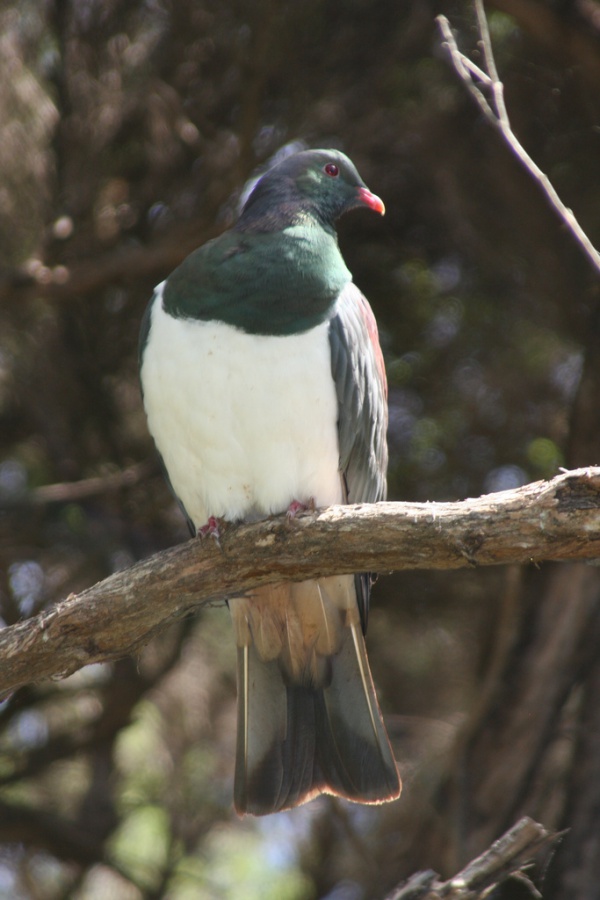Facts About New Zealand pigeon
The kererū, also known as the New Zealand pigeon, is a striking bird found exclusively on the New Zealand mainland. This large, eye-catching pigeon plays a critical role in the local ecosystem by dispersing the seeds of native trees. Historically, kererū served as an important food source for the Māori people. Unfortunately, their population has significantly declined due to factors such as European colonization, the introduction of predators like rats and possums, and illegal hunting.
The kererū is also referred to as "kūkupa" and "kūkū" and is sometimes called the wood pigeon, although it differs from the wood pigeons found in the Northern Hemisphere. These birds stand out not only for their size and appearance but also for their unique behavior, diet, and breeding habits. They primarily consume fruit but also feed on leaves, flowers, and buds. This diverse diet enables them to spread the seeds of large native fruits and drupes, thereby contributing significantly to the growth of native trees.
There are various subspecies of the New Zealand pigeon, with the Chatham Island pigeon recognized as a distinct species. The kererū belongs to the pigeon family Columbidae and the subfamily Ptilinopinae. While the Chatham Island pigeon is classified as "Vulnerable" the conservation status of the kererū varies across different regions.
The distribution of kererū has been adversely affected by habitat loss, hunting, and predation by introduced species. In Māori culture, the kererū is considered a taonga (treasure) and holds substantial cultural significance. Traditional methods of capturing and preserving kererū have been passed down through generations, and the bird features prominently in Māori mythology.
To protect the kererū, legal restrictions on hunting and harvesting have been implemented. There has been some discussion about allowing customary harvests of kererū to preserve traditional knowledge and uphold Māori rights. Currently, the customary use of kererū is limited to feathers and bones collected from birds that have died naturally, with the Department of Conservation overseeing these practices.
